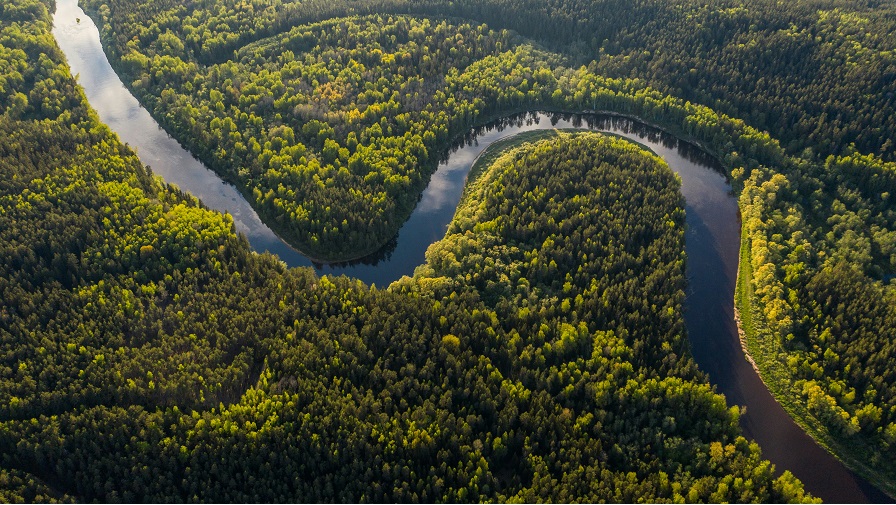Ancient and colonial legacies still shaping the Amazon's forests
Human influence across centuries continues to define biodiversity and carbon storage in the world’s largest rainforest, according to a new collaborative and international study involving ICTA-UAB researcher Umberto Lombardo.

According to ICTA-UAB researcher and coauthor Umberto Lombardo, "our research provides the most comprehensive and up-to-date assessment of the pre-Columbian and colonial human footprint in Amazonian forests".
Led by the University of Amsterdam, the study shows that the Amazon rainforest – often described as one of the last untouched wildernesses –still bears the deep ecological imprints of both pre-Columbian Indigenous communities and European colonists.
Using cutting-edge spatial modeling and vast historical datasets, the researchers discovered that centuries of human settlement, cultivation, and resource extraction have left lasting marks on the distribution of Amazonian tree species, many of which remain visible today.
‘Our findings show that seemingly undisturbed parts of the Amazon forest have been shaped by people over hundreds or even thousands of years,” says Crystal McMichael, the study’s lead author. ‘These invisible legacies may still be affecting ecosystem functioning as well as biodiversity – and the type of legacy likely depends on its most recent inhabitants’, adds coauthor Mark Bush from Florida Institute of Technology.
Ancient roots, lasting impacts
The research team combined data from over 7,000 archaeological sites with more than 100,000 digitised biodiversity records dating back to the early European expeditions. By modeling human settlement patterns during the pre-Columbian era (before European contact) and the colonial era (1600–1920 CE, including the Amazon Rubber Boom), they mapped where human activity was most intense.
These historical models were compared with tree data from 1,521 forest plots across the Amazon basin, representing 262 dominant and useful species.
The results were striking: both Indigenous and colonial populations tended to settle along major rivers, where fertile soils and access to trade routes supported larger communities. Even today, forests within about 10 km of these rivers show higher abundances of tree species favored by humans.
‘Rivers have always been lifelines in the Amazon,’ says McMichael. ‘They shaped how people moved, lived, and interacted with the forest – and that history is still being written into the ecosystem.’
Enrichment and depletion
The study found that human activity enriched the forest with many useful and now-iconic species. Trees such as the Brazil nut (Bertholettia excelsa), rubber tree (Hevea brasiliensis), and the murumuru palm (Astrocaryum murumuru) all flourished in areas with a long history of human presence. These species remain among the Amazon’s most economically and ecologically important today.
In contrast, other trees – such as certain palms and hardwoods used in colonial construction –appear to have declined in regions that experienced heavy exploitation during the colonial and Rubber Boom periods.
‘Indigenous communities tended to manage forests and alter species abundances’ says Hans ter Steege of Naturalis Biodiversity Center, and coordinator of the Amazon Tree Diversity Network. ‘Later colonial industries often extracted resources more intensively, leaving behind ecological scars that are still healing.’
A living legacy for conservation
The study challenges the long-held idea that most Amazonian forests are purely “natural” systems untouched by human hands. But it also challenges the recent ideas that only the pre-Columbian inhabitants of Amazonia shaped the forest. Instead, they are living mosaics of ecological and cultural history that have been written and rewritten over centuries to millennia.
The researchers argue that recognising these legacies is crucial for improving conservation and climate models, which often assume that old-growth forests have remained undisturbed for millennia.
According to ICTA-UAB researcher and coauthor Umberto Lombardo, “our research provides the most comprehensive and up-to-date assessment of the pre-Columbian and colonial human footprint in Amazonian forests. By integrating data from multiple databases, we show that, particularly along rivers, the current forest composition and the relative abundance of Amazonian tree species have been profoundly shaped by both pre-Columbian indigenous peoples and the expansion of rubber exploitation."
Ultimately, the research reframes parts of the Amazon as a dynamic system of coexistence between people and nature – an evolving landscape that has been cultivated, abandoned, and reborn many times over.
‘To protect the Amazon’s future, we must first understand its past,’ says McMichael. ‘Accounting for ancient and colonial legacies can help us better predict how forests will respond to deforestation, climate change, and reforestation efforts.’
Reference article: McMichael, Crystal N.H., et al. 2025. Centuries of compounding human influence on Amazonian forests. Proceedings of the National Academy of Sciences (PNAS). Vol. 122. https://doi.org/10.1073/pnas.2514040122